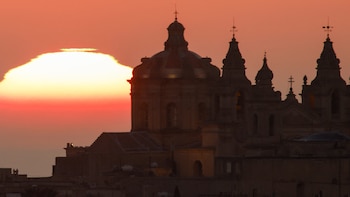
Since 1991, Colombia has been constituted as a secular state where different religions are professed, without any obstacle from society or the government itself. However, prior to this, the Catholic religion was considered the most important in the territory, a connotation that still endures and in the Easter season, it leads to the parishioners to know new places related to their faith, in this case; churches, chapels, basilicas and centers of congregation, become the main destination of believers.
Within all departments, there are important churches, because thanks to the different archdioceses that are established in each of the regions, cultural attractions of this type are established, however, routes tend to change, even in Colombia some places are enhanced more than others, either because of their architecture or their historical significance in relation to the spiritual tradition.
Some places are characterized by their particular traditions, since there are flogging, extreme trails and pilgrimage routes, which seek to imitate the Via Crucis of Jesus in their time, however, many keep stories of more than a century, since even at the time of the colony they were exalted by the Spanish crown before them indigenous cultures or cultures originating in the national territory.
Basilica of the Lord of Miracles — Buga, Valle del Cauca
This giant temple is located near the heart of the valley, and is characterized by the tradition of thousands of parishioners from Vallecaucano and the Coffee Axis, who seek to arrive to fulfill their promises; some do so on foot and others by bicycle, who ask the Miraculous of Buga different requests, which can become prodigy.
(Half past 1 from Cali)
Our Lady of the Rosary Shrine of Las Lajas — Ipiales, Nariño
A structure carved at the beginning of the last century, located 10 km from the border with the equator, its Gothic style stands out in the middle of a mountain canyon through which the Guáitara river crosses. It not only becomes a place of penance, but also an appreciation of the neo-gothic art that is embodied in its architecture.
(Two hours from Pasto)
Shrine of the Fallen Lord of Monserrate - Bogotá
Its history led it to become the reference point for both tourists and city dwellers in the capital, as it settles on the eastern hills and shows its white beadowless before the eyes of believers and non-believers. At Easter, some dare to climb the hill on their knees, while others choose to use the cable car or funicular and reach the summit, however, most of them are looking for a purpose, which is to bring a request to the Catholic figure inside the temple.
Sanctuary of the Divine Child Jesus - Bogota
The Salesian community has always found itself before the management of this important temple, which has gained importance thanks to the devotion of the parishioners to the Divine Child. Located in the 20 de Julio neighborhood in the south of the capital, it gathers a high percentage of the population who not only attend Easter, but also Sunday through Sunday.
Zipaquira Salt Cathedral — Zipaquira, Cundinamarca
Its descent is similar to the gloomy catacombs, as it is in the middle of the Salt Park, erecting an underground temple that has been classified as a jewel of modern architecture, standing out nationally and in the region as a cultural and religious heritage. To get to this sanctuary, you can do it using the savannah train in its days of operation from Bogotá, a complement that would give a unique connotation to this adventure.
(One hour from Bogotá)
In the municipality of Santo Tomás, Atlántico, there is an unusual tradition that, in the 21st century, can be considered rudimentary and even disgraceful by some spectators, since it has even been rejected by the Catholic Church, men and women walk the streets of this jurisdiction under the inclement sun, whipping their backs with whips and offering a sacrifice according to their belief, this has become a spectacle consumed by the morbid, which year after year stands out in the region,
On the other hand, through a quieter vigil, the White City lights up during the Major Week, since Popayán, capital of the department of Cauca, preserves traditions that are respected by both young and old, where the holding of processions in the best Andalusian style stands out for its religious character within the framework of a tradition which is still in force.
It is important to note that both the Zipaquirá Salt Cathedral and the Las Lajas Sanctuary in Ipiales are part of the so-called seven wonders of Colombia, chosen in 2017 through a contest sponsored by the newspaper El Tiempo.
KEEP READING:
Últimas Noticias
Debanhi Escobar: they secured the motel where she was found lifeless in a cistern

The oldest person in the world died at the age of 119

Macabre find in CDMX: they left a body bagged and tied in a taxi
The eagles of America will face Manchester City in a duel of legends. Here are the details

Why is it good to bring dogs out to know the world when they are puppies




